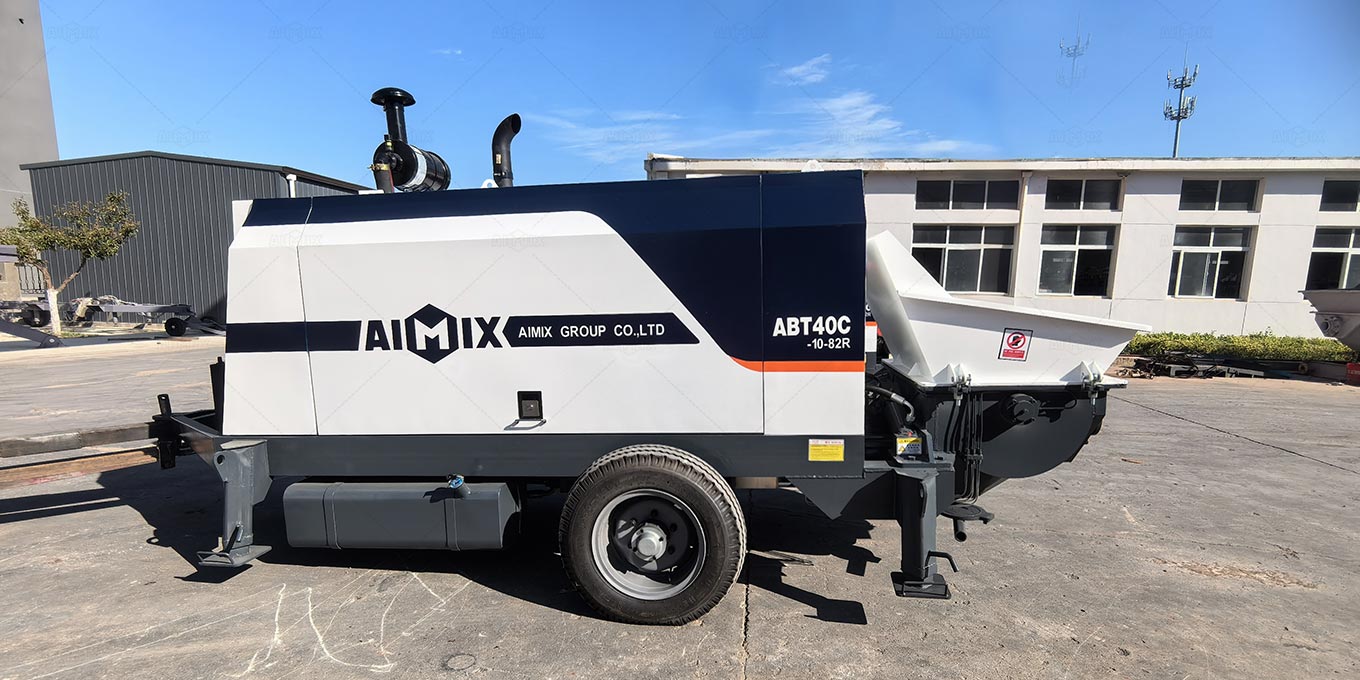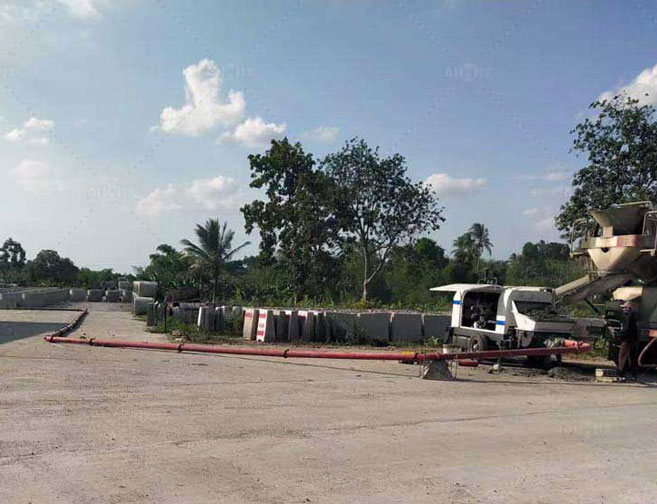Reaching for the sky with a 30-story structure is a monumental undertaking, a symphony of engineering and logistics where every component must perform in perfect harmony. Among the most critical decisions in this process is the selection of the concrete trailer pump for sale, the very machine responsible for translating liquid stone from the ground to the uppermost floors. This is not a choice to be made lightly. The wrong capacity can lead to catastrophic delays, compromised structural integrity, and significant financial loss. Selecting the right pump is a nuanced process, demanding a deep understanding of the project’s unique demands and the machine’s capabilities. It is a strategic decision that forms the backbone of an efficient and safe vertical build.

The Vertical Ascent: A Logistical Challenge
Pumping concrete to such a significant height introduces a complex set of physical and logistical constraints. Gravity and friction become formidable adversaries, working against the steady flow of the concrete mix. The pump must generate immense pressure not only to lift the material vertically but also to push it through hundreds of meters of pipeline, navigating both horizontal runs and tight bends. Furthermore, the sheer scale of a 30-story pour dictates a relentless pace. The concrete must be placed continuously to avoid cold joints—weak points where subsequent pours do not properly bond with the previous layer. An underpowered stationary pump for concrete would operate at its absolute limit, risking mechanical failure and creating a single point of failure for the entire operation. The consequences of such a failure are not merely delays; they represent a fundamental threat to the project’s schedule and structural soundness.
Core Determinants: Unpacking the Capacity Equation
Choosing the correct pump involves analyzing two primary, interconnected specifications: output volume and pressure. These are the twin pillars of pumping capacity.
Output volume, measured in cubic meters per hour, is the pulse of the operation. It determines how quickly concrete can be placed. For a large floor slab on a 30-story building, a high output is necessary to complete the pour within the setting time of the concrete. A slow pour risks the concrete beginning to set in the pipeline, a scenario that can lead to a complete and disastrous blockage. The required output is calculated based on the volume of concrete to be placed and the targeted completion window.

Pressure, measured in bars or megapascals (MPa), is the force that conquers height and distance. This is the specification that directly addresses the challenge of a 30-story ascent. The pump must generate sufficient pressure to overcome the static head (the weight of the concrete column in the vertical pipeline) and the dynamic pressure loss from friction as concrete moves through the entire pipeline system. A pump with inadequate pressure will simply be unable to reach the required height, or it will do so at a trickle, making the output volume irrelevant. The machine’s configuration, particularly the diameter of its hydraulic cylinders and the design of its concrete cylinders, is what ultimately defines its pressure capabilities.
Navigating the Capacity Spectrum
For a 30-story concrete pour, the industry typically looks toward high-pressure pumps. However, within this category, there is a spectrum to consider.
A high-pressure, medium-output pump (often in the range of 80-100 cubic meters per hour) is frequently the ideal workhorse for such projects. It provides the necessary force to reliably reach extreme heights while delivering a consistent, manageable flow. This type of concrete pump offers an excellent balance, ensuring a continuous pour without overwhelming the crew placing and finishing the concrete. Its robust pressure rating provides a crucial safety margin, accounting for pipeline layout complexity and variations in the concrete mix design.
For projects where speed is the paramount concern, such as when working with rapid-setting mixes or on incredibly tight schedules, a high-output, high-pressure pump may be warranted. These machines are formidable pieces of equipment, capable of moving vast quantities of concrete vertically at a remarkable pace. However, their deployment requires meticulous planning. The placement and finishing crews must be able to keep up with the torrent of material, and the pipeline system must be impeccably designed to handle the immense forces involved. Selecting such a powerful machine without the operational readiness to support it can create as many problems as it solves. It is also prudent to select a pump with a capacity that provides a contingency buffer, ensuring it is not operating at its absolute maximum rated pressure for extended periods, thereby enhancing its reliability and longevity.
Beyond the Machine: Orchestrating a Successful Pour
The pump itself is only one actor in a larger production. Its successful performance is entirely dependent on the ecosystem surrounding it. A highly skilled and cohesive crew is indispensable. The mini concrete pump operator must possess an almost intuitive understanding of the machine’s rhythms and sounds, able to anticipate issues before they escalate. The crew managing the pipeline must ensure all connections are secure and the line is properly primed and lubricated before the pour begins.
The logistics of the pipeline setup itself require intelligent forethought. The route from the pump to the point of placement should be as direct as possible, minimizing the number of sharp bends and horizontal distance, which are major contributors to pressure loss. Using a slightly larger diameter pipeline for the vertical sections can also significantly reduce friction, making the pump’s job easier. Finally, partnering with a supplier that provides not just equipment but also deep technical expertise is invaluable. Their engineers can perform precise pressure loss calculations, recommend the optimal pipeline configuration, and provide on-site support, turning a complex logistical challenge into a smoothly executed ascent from ground to sky.
